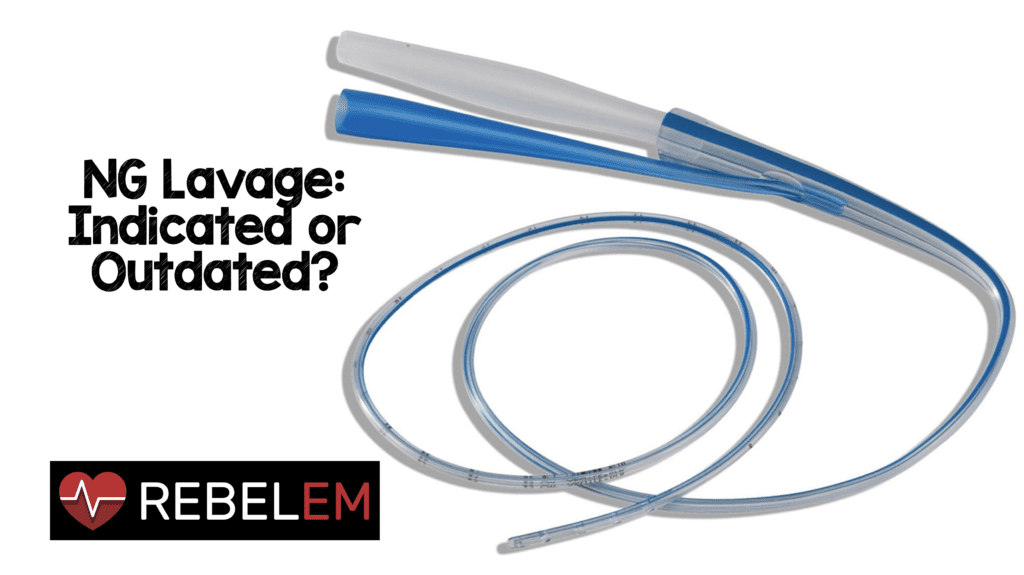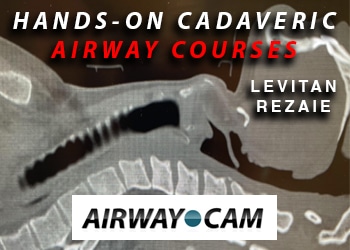 Nasogastric lavage (NGL) seems to be a logical procedure in the evaluation of patients with suspected upper GI bleeding, but does the evidence support the logic? Most studies state that endoscopy should occur within 24 hours of presentation, but the optimal timing within the first 24 hours is unclear. Rebleeding is the greatest predictor of mortality, and these patients benefit from aggressive, early endoscopic hemostatic therapy and/or surgery. So what are the arguments for and against NGL?
Nasogastric lavage (NGL) seems to be a logical procedure in the evaluation of patients with suspected upper GI bleeding, but does the evidence support the logic? Most studies state that endoscopy should occur within 24 hours of presentation, but the optimal timing within the first 24 hours is unclear. Rebleeding is the greatest predictor of mortality, and these patients benefit from aggressive, early endoscopic hemostatic therapy and/or surgery. So what are the arguments for and against NGL?
PRO nasogastric lavage
1. A Positive NGL is Predictive of a High Risk Lesion [1]
- What they did:
- Retrospective chart review of 520 pts with NGL before endoscopy
- Find an association between NGL aspirate findings (bloody, “coffee ground,” and clear/bile) and high-risk lesions
- What they found:
- Bloody aspirate associated with high-risk lesion (OR 4.82 when compared to clear/bile aspirate)
- Bloody aspirate associated with high-risk lesion (OR 2.8 when compared to coffee-ground aspirate)
- 14.7% of clear/bile aspirate cases had a high risk lesion.
|
- Conclusion: NGL is moderately useful in predicting high-risk lesions requiring early (<24hr) endoscopy.
CON Nasogastric lavage
1. It is painful [2]
- What they did:
- Prospective, observational study
- 1,171 procedures, from the 15 most common procedures performed in the ED
- Patients recorded a pain score, based on a 100-mm VAS scale, post procedure
- What they found:
- The most painful procedure according to patients was NG tube placement
- NG tube placement was more painful than intubation, abscess drainage, fracture reduction, and urethral catheterization
- Conclusion: The most painful procedure for ED patients is NG tube placement.
2. NGL IS NOT the only way to get good visualization during endoscopy [3]
- What they did:
- Prospective, randomized, multicenter study
- 6 EDs, 253 patients with an upper GI bleed (UGIB)
- IV erythromycin (84 pts) vs NGT without erythromycin (85 pts) vs NGT with erythromycin (84 pts) for visualization during endoscopy
- What they found:
- No difference in visualization between groups
- No difference in duration of endoscopic procedure, rebleeding, need for 2nd endoscopy, number of transfused PRBCs, or mortality at 2, 7, and 30 days
- Conclusion: In acute UGIB, administration of IV erythromycin provides satisfactory endoscopic visualization without need for a NGL.
3. NGL DOES NOT improve mortality, length of stay, or transfusion requirements [4]
- What they did:
- Retrospective analysis
- 632 patients with GI bleeding to evaluate 30-day mortality, mean hospital length of stay (LOS), and transfusion requirements
- What they found:
- No statistical difference in 30 day mortality, mean LOS, or transfusion requirements
- NGL was associated with earlier time to endoscopy
- Conclusion: NGL is associated with earlier performance of endoscopy, but NO difference in clinical outcomes.
FINAL THOUGHTS
So what should we say to our gastroenterology colleagues about NGL and UGIB? Well, their own American College of Gastroenterology 2012 guidelines state NGL is not required in patients with UGIB for diagnosis, prognosis, visualization, or therapeutic effect [5]. It looks like there is no dilemma any longer.
NG lavage DOES NOT help patients in the emergency department with acute upper GI bleed and is an outdated practice.
References:
- Aljebreen AM et al. Nasogastric Aspirate Predicts High-Risk Endoscopic Lesions in Patients with Acute upper-GI Bleeding. Gastrointest Endosc 2004. PMID: 14745388
- Singer AJ et al. Comparison of Patient and Practitioner Assessments of Pain from Commonly Performed Emergency Department Procedures. Ann Emerg Med 1999. PMID: 10339680
- Pateron D et al. Erythromycin Infusion or Gastric Lavage for Upper Gastrointestinal Bleeding: A Multicenter Randomized Controlled Trial. Ann Emerg Med 2011. PMID: 21333385
- Huang ES et al. Impact of Nasogastric Lavage on Outcomes in Acute GI Bleeding. Gastrointest Endosc 2011. PMID: 21737077
- Laine L et al. Management of Patients with Ulcer Bleeding. Am J Gastroenterol 2012. PMID: 22310222



